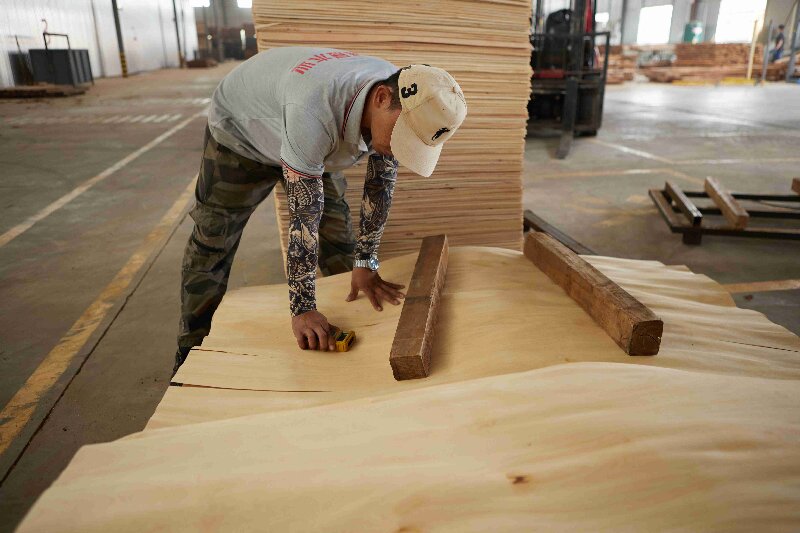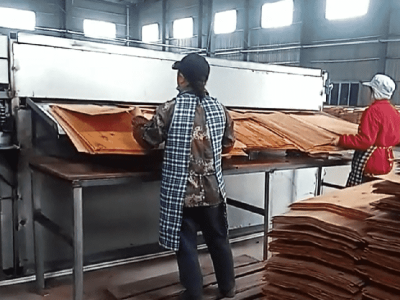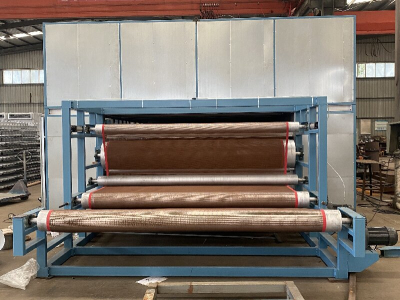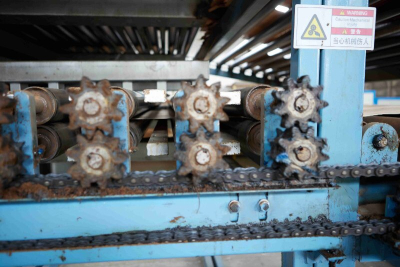The Veneer Revolution: Innovation, Sustainability, and Smart Technology Reshape the Wood Industry and Building Design
Global, November 10, 2025 – In an era increasingly defined by the urgent need for sustainable practices and material authenticity, the ancient art of wood veneer is experiencing a profound renaissance. Far from being a mere decorative afterthought, veneer is now at the forefront of a transformative movement within the global wood industry, driven by technological breakthroughs, evolving environmental mandates, and a paradigm shift in architectural philosophy. The convergence of advanced manufacturing, intelligent drying systems like the modern veneer dryer, and a growing demand for biophilic design is positioning wood veneer as a critical material for the future of responsible and beautiful building construction and interior design.
The narrative surrounding wood veneer has traditionally been mired in misconceptions—often unfairly compared to its solid wood counterpart or low-pressure laminates. Today, that narrative is being rewritten. The industry is leveraging innovation to demonstrate that veneer is not a compromise, but a sophisticated choice that offers unparalleled aesthetic diversity, superior resource efficiency, and newfound performance capabilities that are redefining its application in commercial and residential spaces.
The Sustainability Imperative: Veneer as a Champion of the Circular Economy
At the heart of veneer's modern appeal is its inherent sustainability, a factor that has become a primary driver in material specification for architects, designers, and consumers alike.
"Wood veneer is the original upcycled material," explains Dr. Alisha Reynolds, a materials scientist at the Global Institute for Sustainable Forestry. "By slicing or peeling a log into sheets mere millimetres thick, we can create an immense surface area of precious, often rare, wood grain from a single tree. One log can produce enough veneer to cover hundreds of doors or feature walls, whereas that same log might only yield a handful of solid wood tables. This exponential increase in yield is a game-changer for resource conservation."
This efficiency dovetails perfectly with the principles of the circular economy. Manufacturers are increasingly sourcing from certified forests (FSC and PEFC) and are pioneering the use of "waste" streams. Urban forestry programs, which reclaim trees from city parks or streets that have fallen due to disease or storms, are providing unique, character-rich veneers with a compelling local story. Furthermore, species once considered non-commercial or damaged are being reimagined. Burled sections, trees with nail inclusions, or those affected by spalting (a natural fungal coloration) are no longer discarded; they are celebrated for their unique beauty, transformed into high-value, one-of-a-kind veneer sheets.
The sustainability story extends beyond the raw material. The adhesives used in bonding veneer to substrates are rapidly evolving towards low-VOC (Volatile Organic Compounds) and formaldehyde-free formulas, improving indoor air quality and contributing to healthier building environments. This aligns with stringent green building certification standards like LEED, BREEAM, and the Living Building Challenge, where specifying certified and low-emission veneers can contribute significantly to earning points.
Technological Leaps: The Smart, Connected Veneer Dryer and Digital Fabrication
If sustainability is the soul of the modern veneer industry, then technology is its beating heart. Nowhere is this more evident than in the critical process of drying, where the humble veneer dryer has been transformed into a highly sophisticated, data-driven machine.
The drying process is arguably the most crucial step in veneer production. Improper drying can lead to checking, discolouration, and brittleness, rendering the material useless. Traditional dryers were energy-intensive and relied on broad-stroke temperature controls. The latest generation of veneer dryer systems, however, incorporates a suite of smart technologies.
"Modern dryers are equipped with AI-powered sensors that continuously monitor the moisture content, temperature, and air velocity for each individual sheet of veneer as it travels through the dryer," says Markus Thalberg, an engineer at a leading German machinery manufacturer. "The system makes real-time micro-adjustments to the drying parameters, ensuring a perfectly consistent and optimized result for every single piece, regardless of species or initial moisture content. This not only drastically reduces energy consumption by up to 30% but also minimizes waste and enhances the final product's quality and stability."
This precision ensures that the veneer is perfectly prepared for the next stages of production, leading to fewer defects in the final laminated panels. Beyond drying, digitalization is permeating the entire workflow. CNC (Computer Numerical Control) laser cutters and waterjet systems allow for incredibly intricate inlays, patterns, and marquetry that were once the exclusive domain of master craftsmen. These machines can cut multiple sheets simultaneously with perfect registration, enabling the creation of complex, repeatable geometric designs for large-scale commercial projects.
Moreover, digital printing technology has opened a new frontier. High-resolution printers can now apply hyper-realistic wood grain, or any other pattern, onto more common and fast-growing species, creating affordable "look-alike" products that divert pressure from over-harvested old-growth forests. Conversely, this same technology can be used to create entirely new, avant-garde aesthetic expressions.
The Architectural and Design Shift: Biophilia and the Return to Authenticity
In the world of architecture and interior design, a powerful trend is fueling the demand for high-quality wood veneer: Biophilia. The concept, which posits that humans have an innate connection to nature, has become a central tenet of modern building design. Incorporating natural materials like wood is proven to reduce stress, improve cognitive function, and enhance occupant well-being.
"Wood veneer allows us to bring the warmth, texture, and organic complexity of nature into large-scale commercial projects where solid wood would be impractical due to cost, stability, or weight," notes renowned architect Elena Petrova. "We are specifying veneer not just for furniture and millwork, but for entire ceilings, expansive feature walls, and even integrated acoustic panels. It softens the hard edges of a modern building, creating a sensory-rich and human-centric environment."
This has led to a surge in the use of veneer in sectors like corporate offices, healthcare facilities, hospitality, and educational institutions. The demand is for authenticity—designers and clients are seeking out veneers with pronounced grain patterns, natural knots, mineral streaks, and other characteristics that were once considered flaws. This "wabi-sabi" aesthetic celebrates imperfection and tells a story of natural origin, a stark contrast to the sterile, uniform surfaces of the past.
The versatility of veneer is also being pushed to new limits. Curved and formed veneers are being used to create fluid, sculptural elements in interiors. Back-lit veneers, where the translucent qualities of certain species are highlighted with integrated lighting, create dramatic and warm ambient effects. Furthermore, the development of ultra-thin, flexible veneers has opened up applications on curved surfaces and in product design that were previously unimaginable.
Challenges and the Road Ahead: Navigating a Complex Global Market
Despite the optimistic trends, the wood industry and the veneer sector face significant challenges. The global supply chain remains vulnerable to disruptions, as evidenced by recent geopolitical events and logistical bottlenecks. Fluctuating costs for raw logs, energy, and international shipping continue to create market volatility.
There is also the persistent challenge of perception. A segment of the market still associates veneer with low-quality, mass-produced furniture from past decades. The industry's task is to continue its educational outreach, highlighting the qualitative and technological gulf that exists between a cheap, photo-finished laminate and a genuine, architectural-grade wood veneer backed by a robust substrate.
Looking forward, the trajectory is clear. Research is underway into bio-based, non-toxic fire-retardant treatments that would allow veneer to be used more extensively in code-restricted applications. The integration of the Internet of Things (IoT) in the veneer dryer and other machinery will advance further, enabling predictive maintenance and even greater efficiencies. We can also expect to see a growing library of "digital wood twins"—high-resolution scans of rare veneer sheets—allowing designers to visualize and specify exact patterns in a BIM (Building Information Modeling) environment before a single sheet is physically cut.
Conclusion: A Material for Our Time
The story of wood veneer is no longer just about aesthetics; it is a narrative of intelligent adaptation. By embracing cutting-edge technology in the veneer dryer and manufacturing process, championing its core sustainable values within the broader wood industry, and responding to the deep-seated human need for natural connection in the built environment, the veneer sector has secured its relevance for the 21st century and beyond. It stands as a powerful testament to the idea that the most forward-thinking solutions are often those that work in harmony with nature, using innovation not to replace, but to enhance and preserve its timeless beauty. As the building world continues to seek out materials that are both responsible and resonant, wood veneer is poised to remain a cover-story protagonist.
About the Global Wood Veneer Alliance (GWVA)
The Global Wood Veneer Alliance is a non-profit trade association representing leading veneer manufacturers, suppliers, and designers worldwide. Our mission is to promote the aesthetic, practical, and sustainable benefits of wood veneer through education, research, and the establishment of industry standards.







